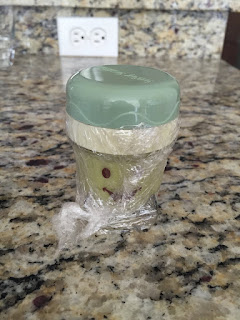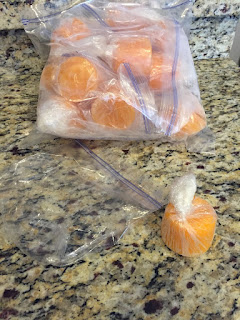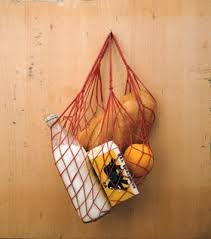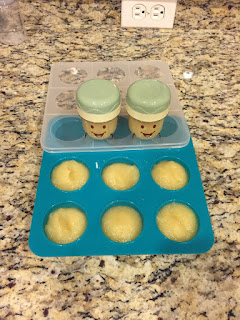Avocados
I think this is my favorite recipe so far because there's no cooking involved! It literally takes about 5 minutes to prep and blend (or mash). Plus, avocados are basically a super food. The only downside is that I've read that avocado does not freeze well. If frozen, it may turn brown and become a bit runny. I chose not to freeze avocado. Another thing to keep in mind is that avocados oxidize quickly and turn an icky brown color, so they must be used relatively quickly or sealed air-tight.I did not grow up eating avocados. In the post-Soviet era, there were about 8 vegetables on the market and the 'exotic' avocado was not one of them.
Here's one childhood memory: I remember that circa 1995 my dad bought a coconut for me for 'Christmas' (technically, it was New Year's, but whatever) and it was SUCH a big deal. I'm not sure which is weirder, the fact that I got fruit for 'Christmas' or that we had never seen a coconut anywhere else but TV up until that point in our lives. Just imagine, my drunk family (again, it was New Year's) trying to open a coconut with a butter knife, I mean, 'the household tool'. No one knew what to do with it. It was quite disappointing. Anyway, I'm 99% sure that I had not tasted avocado until I was at least 20.
Here's a quick avocado recipe (if I can even call it that):
Intro: Due to their thick skin and other factors, avocados are not on the 'dirty dozen' list and do not have to be purchased organic. These are not organic because well, my grocery store didn't have an organic option. Avocados should be relatively firm, but when you push on them gently they should be a bit soft. If they're too soft, they're too ripe. If they're super hard, they're not ripe enough...pretty easy, right?
I bought 4 - two that were pretty ripe and two that could sit for a couple of days.
Also, when I got home I saw this sticker...thanks Fry's for moron-proofing my shopping experience.
2). I used my avocado slicer to remove the meat of the fruit from the shell. It is a handy little tool! I have yet to master perfect slices.
3). Blend and serve! Mine came out a bit chunkier than I expected, but Max loved it just fine.
The next day, I used a bigger avocado and refrigerated one portion in a bullet storage container. If you cover the avocado puree with plastic wrap and make sure to expel all of the air before covering with a regular lid, it should keep in the refrigerator overnight just fine. I know that most unused baby foods can be stored in the refrigerator anywhere from 48-72 hours, but I wouldn't store avocado for longer than overnight.
.
In conclusion, a half of one medium sized avocado yields about 3oz...just enough to be too much, haha! Figures, the one thing that's difficult to refrigerate and freezes poorly comes in quantities that a portion must be stored.
In conclusion, a half of one medium sized avocado yields about 3oz...just enough to be too much, haha! Figures, the one thing that's difficult to refrigerate and freezes poorly comes in quantities that a portion must be stored.













































